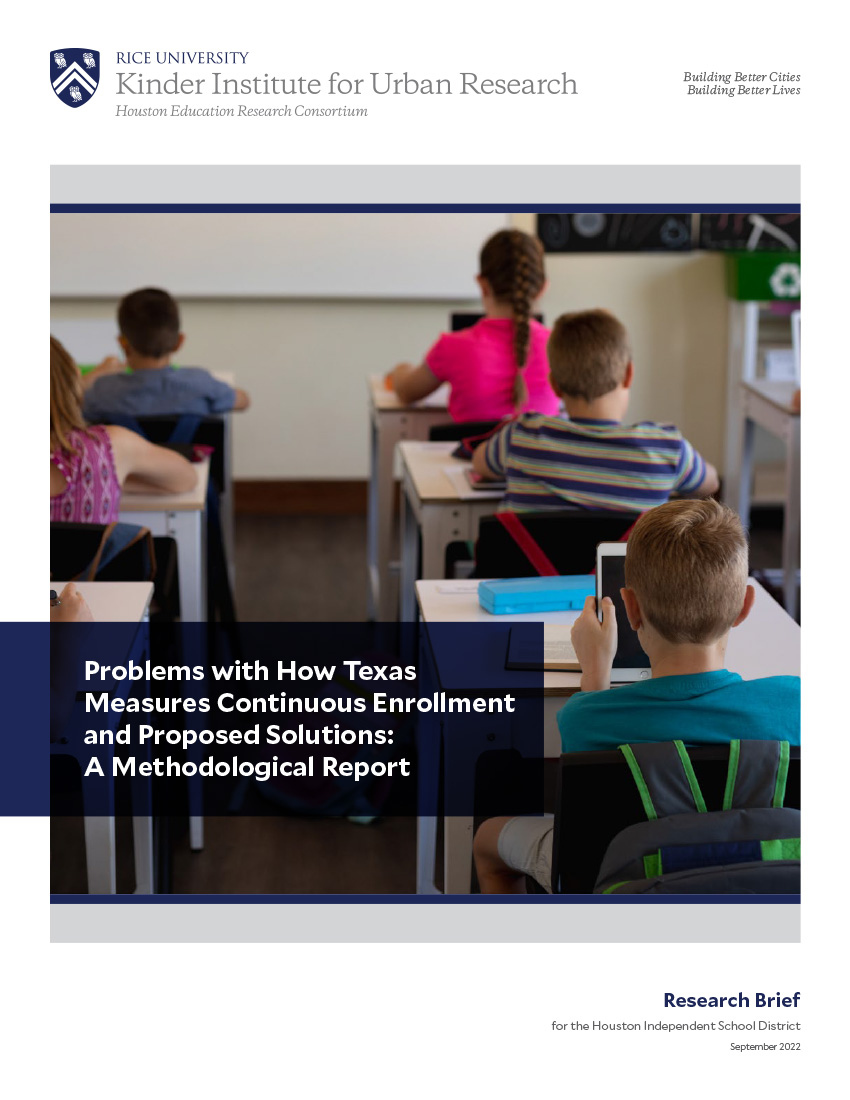Broadly, Texas defines continuous enrollment as remaining in the same school district for several years. Its definition does not take into consideration changing schools within districts or students who leave and return to a district. As a result, the state classifies over 70% of students in Texas and in the Houston area as continuously enrolled, suggesting a level of stability in schools that does not align with the lived experiences of students and teachers. It also fails to predict how well students do on state tests once prior performance is considered. To highlight these shortcomings and emphasize the importance of stability in students’ education, two new definitions of continuous enrollment are compared with the existing definition while answering four research questions:
- What percentage of students are continuously enrolled?
- What predicts the percentage of students continuously enrolled at a campus?
- What is the relationship between campus continuous enrollment and schools’ performance on state accountability tests?
- What is the relationship between continuous enrollment and students’ performance on state accountability tests?
The newly proposed definitions identify a smaller percentage of students as continuously enrolled and show that being continuously enrolled is beneficial to students. The link between campus continuous enrollment and campus performance remains tenuous. Recommendations for practice and policy are discussed.




